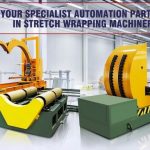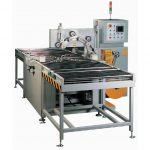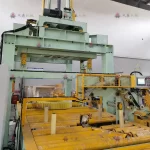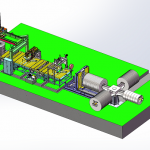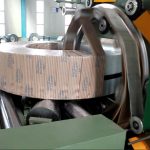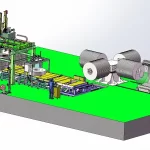How to Compare Automatic Slit Coil Packing Line Installation Times and Requirements
- How to Compare Automatic Slit Coil Packing Line Installation Times and Requirements
- Introduction
- 1. Introduction to Automatic Slit Coil Packing Lines
- 2. Understanding Installation Time Variability
- 3. Factors Affecting Installation Requirements
- 4. Pre-installation Preparation: What to Expect
- 5. Installation Phases: Breaking Down the Timeline
- 6. Comparing Installation Times Based on Automation Levels
- 7. System Compatibility and Integration
- 8. Common Challenges During Installation
- 9. Post-installation Support and Maintenance
- 10. Cost Considerations for Installation
- 11. Evaluating Supplier Capabilities
- 12. Training and Operator Readiness
- Conclusion

Introduction
The process of installing an automatic slit coil packing line is a crucial step for manufacturers seeking efficiency in their packaging operations. With advancements in automation, it is essential to understand the variables that can impact installation times and requirements. This guide will walk you through a comprehensive comparison of the key factors involved, helping you make informed decisions when planning your slit coil packing line installation.
1. Introduction to Automatic Slit Coil Packing Lines
An automatic slit coil packing line is designed to handle the packaging of slit coils in an efficient and streamlined manner. Slit coils, often used in various industrial applications, require careful packaging to prevent damage during transportation and storage. The installation of an automated packing line can significantly reduce labor costs, improve packaging quality, and enhance productivity.
However, installing such a system involves understanding the technical requirements and timelines. The installation time can vary depending on several factors, including the complexity of the system, the size of the facility, and the level of customization needed.
2. Understanding Installation Time Variability
The time required to install an automatic slit coil packing line can vary widely based on several factors. On average, installations can take anywhere from a few weeks to several months, depending on the following:
- System Complexity: The more advanced the automation features, the longer the installation will take. Fully automated systems with integrated software, robotic arms, and sophisticated sensors tend to have longer setup times.
- Facility Readiness: If the facility is already equipped with the necessary infrastructure, such as power supplies, conveyor systems, and storage areas, installation can proceed more smoothly.
- Customization Requirements: Custom-built solutions may require additional time for manufacturing, testing, and fine-tuning to ensure they meet the specific needs of the business.
3. Factors Affecting Installation Requirements
Several key factors impact the installation requirements for an automatic slit coil packing line. These factors include:
- Space Considerations: A large facility with ample space can accommodate more complex packing lines with multiple stations, which might require specific layout planning. Smaller facilities may face space constraints that could extend installation time.
- Power and Utility Needs: Automated systems often require a robust power supply, reliable data connections, and in some cases, specialized climate control systems to ensure optimal operation. Ensuring these utilities are in place before installation can help avoid delays.
- Regulatory Compliance: Some regions have strict regulatory requirements for machinery installation. These include safety standards, worker protection protocols, and environmental guidelines. Compliance with these regulations may require additional inspections and approvals during installation, potentially extending the timeline.
4. Pre-installation Preparation: What to Expect
Proper planning is essential to avoid surprises during the installation process. Here are some key steps to follow during pre-installation:
- Site Survey: Conducting a thorough site survey is critical to understanding the specific conditions of the facility. This survey should assess available space, current infrastructure, and any potential challenges.
- System Design Review: Before installation, the manufacturer or supplier typically reviews the system design with the customer to ensure that all components will fit and function as expected. Any modifications or adjustments can be made at this stage to streamline installation.
- Logistics Planning: Coordinating the delivery of components, scheduling installation personnel, and ensuring that the necessary tools and equipment are available can all help ensure a smooth installation process.
5. Installation Phases: Breaking Down the Timeline
The installation process of an automatic slit coil packing line typically involves several phases. Understanding these phases can provide a clearer picture of the overall timeline.
- Phase 1: Equipment Delivery: The first step involves the delivery of all components. Depending on the supplier’s location and the size of the equipment, this can take a few days to a few weeks.
- Phase 2: Assembly: Once the equipment is on-site, the installation team begins assembling the packing line. This includes setting up conveyors, packing stations, and automation components. The assembly process can take anywhere from one to four weeks, depending on the complexity of the system.
- Phase 3: Calibration and Testing: After assembly, the system must be calibrated and tested to ensure that all components are functioning properly. This includes testing the packaging process, adjusting for specific coil sizes, and integrating the system with any existing automation or software.
- Phase 4: Training and Handover: Finally, operators must be trained on how to use the system effectively. This phase typically involves a handover period, where the installation team provides detailed instructions and troubleshooting guidance.
6. Comparing Installation Times Based on Automation Levels
One of the most significant factors affecting installation times is the level of automation. Let’s break down how the degree of automation impacts the timeline:
- Semi-Automatic Systems: These systems involve some manual intervention, which means fewer components and simpler controls. Installation for semi-automatic systems tends to be faster, typically taking 1-2 weeks.
- Fully Automatic Systems: Fully automated systems require more sophisticated controls, sensors, and robotics. As a result, installation can take 3-6 weeks or more. These systems also require more extensive testing and calibration to ensure seamless operation.
- Hybrid Systems: Hybrid systems, which combine manual and automated processes, can vary in installation time depending on the complexity of the integration. These installations may take 2-4 weeks on average.
7. System Compatibility and Integration
Another important consideration is whether the new slit coil packing line is compatible with existing systems in the facility. This includes integration with enterprise resource planning (ERP) software, warehouse management systems (WMS), and other production lines.
- ERP and WMS Integration: Automated slit coil packing lines can be integrated with ERP and WMS systems to streamline data flow and improve operational efficiency. However, integrating these systems can extend installation times, as it requires software configuration, testing, and troubleshooting.
- Compatibility with Existing Conveyors: If the new packing line needs to connect to existing conveyors or handling systems, modifications may be necessary. This can add time to the installation process, as the equipment must be adjusted or reconfigured to ensure seamless integration.
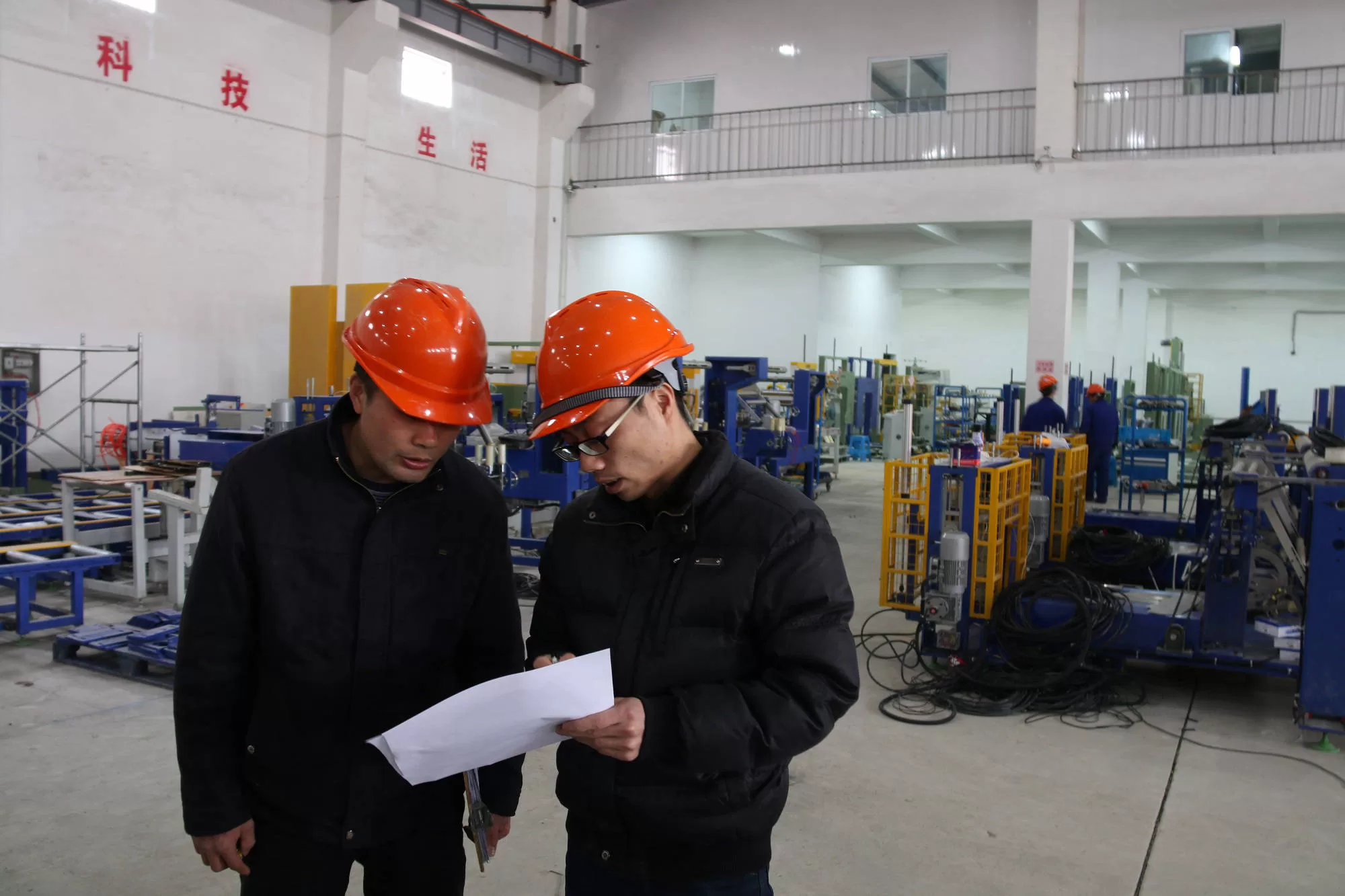
Get Your Best Solution !
8. Common Challenges During Installation
Despite careful planning, some challenges may arise during the installation process. Identifying these challenges early can help mitigate their impact on the timeline. Common challenges include:
- Equipment Delays: If the supplier experiences delays in manufacturing or shipping, it can push back the installation start date.
- Technical Issues: Sometimes, unforeseen technical issues arise during the calibration or testing phase, which can extend the installation timeline. These issues often involve software glitches or hardware malfunctions.
- Space Constraints: If the facility’s layout doesn’t accommodate the packing line as expected, adjustments to the design or layout may be required, causing delays.
9. Post-installation Support and Maintenance
Once the installation of an automatic slit coil packing line is complete, post-installation support becomes crucial to ensure smooth operation. This phase often includes regular maintenance checks, system updates, and ongoing training for operators. Here’s what you need to consider:
- Routine Maintenance: Automated systems require periodic maintenance to ensure they operate at peak efficiency. This can involve checking and replacing parts, lubricating machinery, and monitoring software performance. Maintenance intervals vary depending on the system’s complexity, but most manufacturers recommend a comprehensive check-up every six months.
- Technical Support: Many suppliers offer technical support services, either on-site or remotely, to help troubleshoot any issues that may arise after installation. Prompt technical assistance can prevent downtime and maintain productivity levels.
- System Upgrades: Over time, advancements in technology may offer opportunities to upgrade your slit coil packing line. Software updates, enhanced automation features, or new components can be integrated into the existing system to keep it running efficiently.
10. Cost Considerations for Installation
Installation costs for an automatic slit coil packing line depend on various factors, including system complexity, the need for customization, and the size of the facility. When comparing different options, consider the following:
- Labor Costs: Labor costs for the installation team can vary based on location, the size of the system, and the duration of the installation process. Highly skilled technicians may be required for more complex systems, which can drive up labor costs.
- Infrastructure Upgrades: If your facility requires upgrades to support the new packing line, such as electrical work, structural modifications, or enhanced data connections, these costs should be factored into your budget.
- Customization Fees: Custom-built systems may incur additional costs for design, testing, and configuration. Be sure to obtain a clear breakdown of any customization fees when comparing different suppliers.
11. Evaluating Supplier Capabilities
Choosing the right supplier for your automatic slit coil packing line is crucial to ensure a smooth installation process. Here are some key factors to consider when evaluating potential suppliers:
- Experience and Expertise: Look for suppliers with a proven track record in installing automated packing lines for slit coils. Experienced suppliers are more likely to understand the complexities of the installation process and can anticipate and address potential challenges.
- Installation Support: Some suppliers offer comprehensive installation services, including on-site assessments, design consultations, and post-installation support. These services can help streamline the installation process and ensure the system meets your specific requirements.
- Customer References: Request customer references or case studies from suppliers to learn about their previous installations. This can give you insight into how efficiently they complete installations and how well their systems perform in real-world applications.
12. Training and Operator Readiness
A successful installation doesn’t end when the system is operational. Training your team to use the new packing line efficiently is a vital step in the process. Inadequate training can lead to operational errors, downtime, and reduced efficiency. When planning for installation, consider the following training aspects:
- Comprehensive Operator Training: Ensure that all operators are trained not only on basic operation but also on troubleshooting common issues, performing minor maintenance, and optimizing the system for different types of slit coils.
- Ongoing Training Programs: As the system evolves with new software updates or additional features, ongoing training programs can help keep your team up to date. This will help to maintain efficiency and reduce the risk of operational issues.
- Safety Protocols: Automated systems, while reducing manual labor, can introduce safety risks if not handled correctly. Proper safety training is essential to prevent accidents during operation.
Conclusion
Installing an automatic slit coil packing line is a complex process that involves careful planning, consideration of multiple factors, and thorough execution. By understanding the variables that affect installation times and requirements—such as system complexity, facility readiness, and the level of automation—you can ensure a smooth installation process and avoid costly delays.
From evaluating suppliers to ensuring compliance with industry standards, this guide has outlined the critical steps needed to successfully compare and implement an automated slit coil packing system. Proper training, post-installation support, and a focus on scalability will not only reduce installation times but also set your operation up for long-term success.

Get Your Best Solution !

